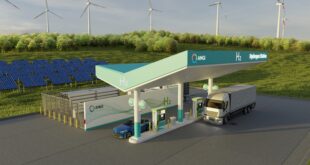AFTER 50 YEARS, NUCLEAR POWER IS STILL NOT VIABLE WITHOUT SUBSIDIES, NEW REPORT FINDS
VALUE OF SUBSIDIES OFTEN EXCEED PRICE OF NUCLEAR ENERGY PRODUCED; OBAMA ADMINISTRATION WANTS TO NEARLY TRIPLE LOAN GUARANTEES
WASHINGTON (February 23, 2011) – Since its inception more than 50 years ago, the U.S. nuclear power industry has been propped up by a generous array of government subsidies that have supported its development and operations. Despite that support, the industry is still not economically viable, according to a report released today by the Union of Concerned Scientists (UCS). The report, “Nuclear Power: Still Not Viable Without Subsidies,” found that more than 30 subsidies have supported every stage of the nuclear fuel cycle, from uranium mining to long-term waste storage. Added together, these subsidies often have exceeded the average market price of the power produced.
“Despite the fact that the nuclear power industry has benefited from decades of government support, the technology is still uneconomic, so the industry is demanding a lot more from taxpayers to build new reactors,” said Ellen Vancko, manager of UCS’s Nuclear Energy and Climate Change Project. “The cost of this technology continues to escalate despite billions in subsidies to both existing and proposed plants. Instead of committing billions in new subsidies that would further distort the market in favor of nuclear power, we should focus on more cost-effective energy sources that will reduce carbon emissions more quickly and with less risk.”
Pending and proposed subsidies for new nuclear reactors would shift even more costs and risks from the industry to taxpayers and ratepayers. The Obama administration’s new budget proposal would provide an additional $36 billion in federal loan guarantees to underwrite new reactor construction, bringing the total amount of nuclear loan guarantees to a staggering $58.5 billion, leaving taxpayers on the hook if the industry defaults on these loans.
The key subsidies for nuclear power do not involve cash payments, the report found. They shift the risks of constructing and operating plants — including cost overruns, loan defaults, accidents and waste management — from plant owners and investors to taxpayers and ratepayers. These hidden subsidies distort market choices that would otherwise favor less risky investments.
The most significant forms of subsidies to nuclear power have four principal objectives: Reduce the cost of capital, labor and land through loan guarantees and tax incentives; mask the true costs of producing nuclear energy through subsidies to uranium mining and water usage; shift security and accident risks to the public via the 1957 Price-Anderson Act and other mechanisms; and shift long-term operating risks such as radioactive waste storage to the public.
The report evaluates legacy subsidies that helped build the industry, ongoing support to existing reactors, and subsidies available for new projects. According to the report, legacy subsidies exceeded 7 cents per kilowatt-hour (¢/kWh), well above the average wholesale price of power from 1960 to 2008. In effect, the subsidies were more valuable than the power the subsidized plants produced.
“Without these generous subsidies, the nuclear industry would have faced a very different market reality,” said Doug Koplow, the author of the report and principal at the Cambridge, Massachusetts-based consulting firm, Earth Track. “Many of the 104 reactors currently operating would never have been built, and the utilities that built reactors would have been forced to charge ratepayers even higher rates.”
The industry continues to benefit from subsidies that offset its operating costs, which include uranium mining, cooling water, accident liability insurance, waste disposal, and plant decommissioning. The exact value of these subsidies, however, is difficult to ascertain. According to the report, ongoing subsidies range from 13 percent to 98 percent of the value of the power produced. Even at the low-end however, subsidies account for a significant portion of nuclear power’s operating cost advantage over competing energy sources.
Subsidies to new reactors could significantly exceed those enjoyed by the existing fleet. In addition to benefiting from ongoing subsidies to existing plants, the Energy Policy Act of 2005 introduced a new suite of subsidies for nuclear power. The report estimates that these subsidies could be worth between 4.2 and 11.4¢/kWh, or as much as 200 percent of the projected price of electricity when these plants are built.
“All low-carbon energy technologies would be able to compete on their merits if the government established an energy-neutral playing field and put a price on carbon,” said Vancko. “Investing in nuclear power carries the unique risks of radioactive waste storage, accidents, and nuclear weapons proliferation that must be fully reflected in the technology’s costs, which is not the case today.”
Based on these findings, the report recommends that the federal government reduce subsidies to the nuclear power industry. If subsidies are necessary, the government should award them competitively to the most cost-effective low-carbon energy technologies. The report also recommends that the government modernize liability systems for nuclear power and establish regulations and fee structures for uranium mining, waste repository financing, and water usage that fully reflect the technology’s cost and risks.
“After 50 years,” said Koplow, “the nuclear industry needs to move away from government patronage to a model based on real economic viability. The considerable operational and construction risks of this power source need to be reflected in the delivered price of power rather than dumped onto taxpayers.”
 Alternative Energy HQ solar power for homes, wind energy, and bio fuel issues
Alternative Energy HQ solar power for homes, wind energy, and bio fuel issues






